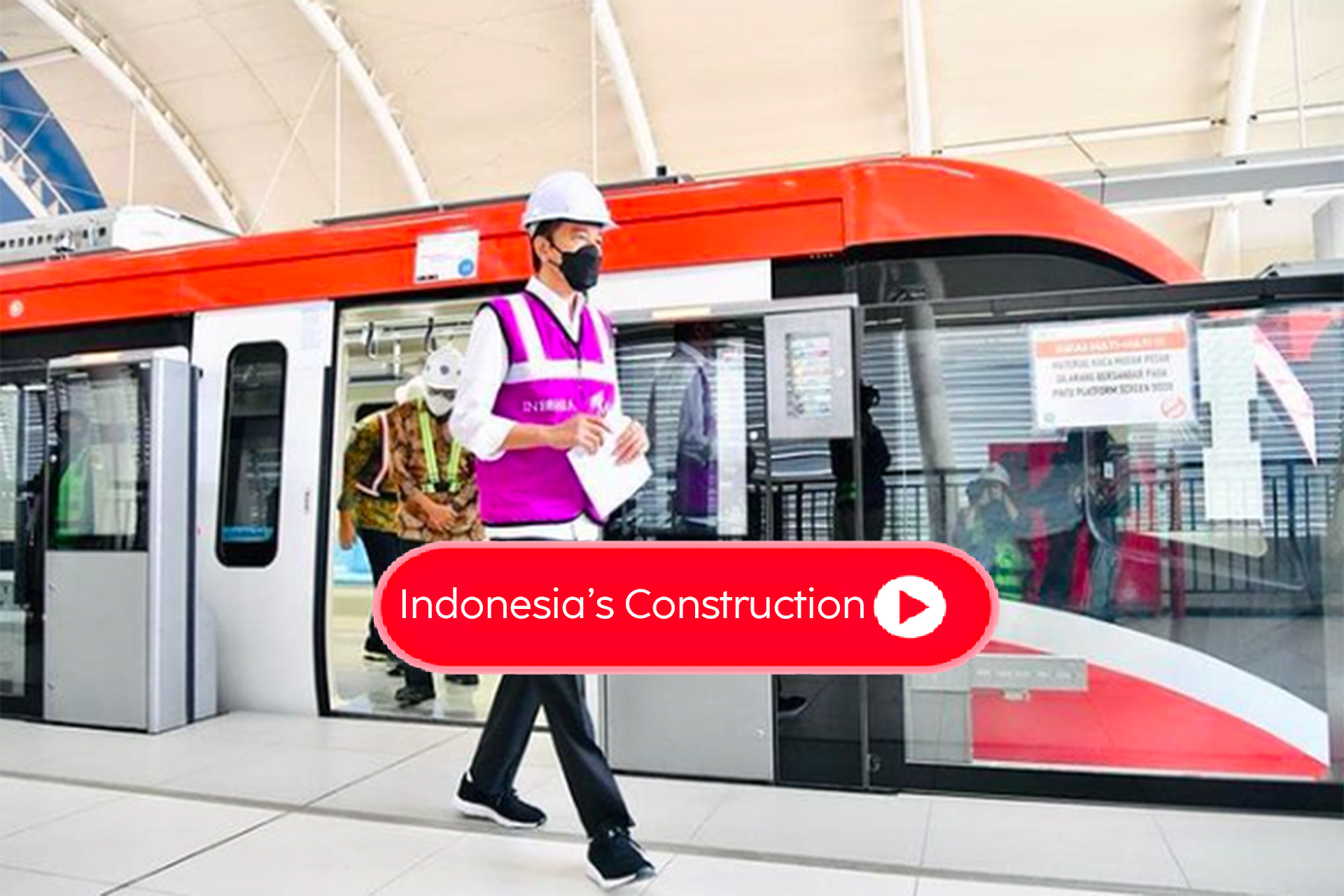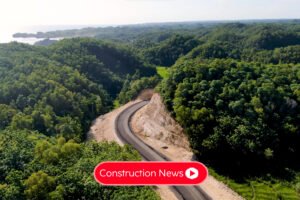The Indonesian government’s commitment to advancing the Light Rail Transit (LRT) transportation system in Bali has taken a more serious turn. This LRT Bali project, initially conceived half a decade ago, has now embarked on the crucial phase of a feasibility study and is being executed in collaboration with South Korea. While the potential benefits of this ambitious endeavor are evident, it has also given rise to a series of pressing concerns.
As reported, the LRT Bali project is anticipated to require a substantial budget of 671 million US dollars, equivalent to approximately Rp 10 trillion. This ambitious LRT system, spanning a considerable length of 9.46 kilometers, is envisioned to significantly enhance the ease of access for the public, creating vital connections between Ngurah Rai Airport and the vibrant Seminyak region through the establishment of four strategically placed stops.
Governor of Bali, I Wayan Koster, elaborated on the practicalities of the LRT system, emphasizing its deployment from Ngurah Rai Airport to the central parking zones of Kuta and Seminyak. This decision stems from the recognition that these locations are hotspots for tourists, a characteristic that often precipitates traffic gridlock and congestion.
“It is an incredibly congested route; the traffic situation is already quite dire. Subsequently, the LRT project will extend to Canggu, followed by the Sanur route and Bali’s cultural heart in Klungkung, including the charming Ubud,” Governor Koster affirmed, following the signing of a collaborative agreement with the Jakarta Provincial Government at Jakarta City Hall on a notable Monday (10/7), as reported by CNNIndonesia.
The development of the LRT project has been underway since 2020 under the stewardship of the Bali Provincial Government. The timeline is structured with the expectation that the feasibility study will conclude by 2023, paving the way for operational commencement in 2027. However, as of November 2022, the financing model for this substantial undertaking, whether it will be derived from the national budget (APBN), external loans, or a public-private partnership (PPP) involving both private enterprises and state-owned entities (BUMN), remains undisclosed.
Indonesia’s Construction: Progress in the Development of LRT Bali
A notable milestone in this endeavor was reached on Tuesday (30/5/2023) when Minister of Transportation Budi Karya Sumadi convened a meeting with representatives from KNR (Korea National Railway) and Korea Overseas Infrastructure and Urban Development Cooperation (KIND). The focus of this meeting was to deliberate upon the collaborative progress between the two nations concerning critical infrastructure projects, primarily the LRT Bali and MRT Phase 4 on the Fatmawati TMII route. Specifically, with regard to the LRT Bali development, Minister Budi revealed that meticulous preparations are being made for the forthcoming feasibility study.
Minister Budi further clarified the funding dynamics, explaining that the feasibility study, often referred to as FS, will be financed through a grant or Official Development Assistance (ODA) provided by South Korea. Meanwhile, the financial resources for the construction phase are expected to be garnered through the Public-Private Partnership (PPP) framework.
Minister Budi’s outlook is optimistic, buoyed by the robust commitment from both parties, indicating that these railway projects hold the promise of achieving substantial progress and adhering to the prescribed timelines.
Indonesia’s Construction: Skepticism Surrounding the LRT Bali Project
While the prospect of mass transportation holds immense promise, it has also triggered a series of reservations. Djoko Setidjowarno, a transportation analyst and Chairman of Advocacy and Society at the Indonesian Transportation Society (MTI) Center, has expressed skepticism concerning the implementation of the LRT system in Bali. Djoko has pointed out that the LRT project has been in the pipeline for quite some time, with feasibility studies having been conducted previously.
“The plan for LRT in Bali has been around for a long time. Feasibility studies were also conducted quite some time ago. Now, the question arises: Will they proceed with its actual construction or not?” Djoko, Chairman of Advocacy and Society at the Indonesian Transportation Society (MTI) Center, questioned in an interview with detikBali on Friday (12/5/2023), as reported by Detiknews.
Djoko offers a four-pronged perspective on the matter, emphasizing that if the Bali Provincial Government is genuinely intent on executing this grand project, four critical considerations must be taken into account. These include deliberations on the operational concept of the LRT system, the state of budgetary preparedness, an analysis of community requirements, and the regulation of private vehicles plying Bali’s roads.
Djoko delves into the operational intricacies of the LRT, distinguishing between systems built above ground, elevated structures, and subway configurations. The choice of design directly correlates with the budgetary requirements.
Djoko goes on to elucidate that constructing an LRT system above ground is typically the most cost-effective option, often involving a budget that may only amount to approximately Rp 1 trillion or a mere fraction of the projected budget.
Indonesia’s Construction: The Looming Challenge of Cost Escalation
Beyond the multifaceted considerations mentioned, the vexing issue of financing looms large. Minister of National Development Planning/Head of the National Development Planning Agency (Bappenas) Suharso Monoarfa has shed light on an ongoing feasibility study for LRT Bali Phase I, indicating early signs of potential cost escalation in the construction of Bali’s inaugural LRT system.
Suharso has clarified that the preliminary findings from the feasibility study have unveiled a disconcerting projection—the cost of constructing LRT Bali could surge to an astounding Rp11 trillion, a significant departure from the initial government estimate of roughly Rp8 trillion. It’s crucial to note, however, that Suharso emphasizes that LRT Bali remains within the confines of the feasibility study phase, and these financial figures are subject to change.
“At this juncture, I am unable to provide a definitive budgetary figure because we are still navigating the intricacies of the feasibility study. The initial estimate was set at Rp8 trillion, but it has now ballooned to approach the figure of Rp11 trillion,” Suharso elucidated on a significant Sunday (20/8/2023), as quoted by Bisnis.
Moreover, Suharso has unveiled the intricacies of the feasibility study phase, elucidating that it encompasses a comprehensive analysis of critical aspects such as route selection for the LRT, financing models, and the collaborative framework that will unite central government bodies, local administrations, and private entities.
The construction of LRT Bali holds the potential to further elevate Bali and Indonesia’s global profile, as thousands of international tourists continue to inundate the island. Should the government successfully navigate the complexities of this ambitious project, ideally with minimal hiccups, it could serve as an exceptionally potent tool for promoting Indonesian tourism on the global stage.
However, before indulging in too much conjecture, it is prudent for the government to engage in a thorough reevaluation process. This would ensure that the challenges and issues associated with LRT development, akin to those experienced in several other urban centers, do not manifest in Bali, thus preserving the island’s unique charm and the anticipated benefits of modernized transportation.




 20% off today. Whatsapp us!
20% off today. Whatsapp us!